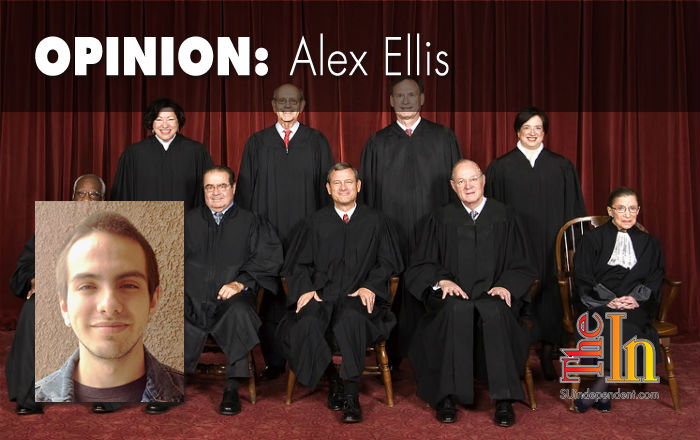
Written by Alex Ellis
As the calls for equality grow louder and louder, relations between the LGBT community and the LDS church have been growing warmer. Shortly after the ban on same-sex marriage was finally lifted in October of last year,a bill protecting the civil rights of both the LGBT community and religious people was passed.
Although similar bills had been proposed for several years, mass support only came after the LDS church officially pledged its support. While originally it seemed like the LDS church was warming up to the LGBT community, recent happenings make this kindness seem like a two-faced act. At the semi-annual LDS general conference, one Mormon leader warned against those who live “alternative and counterfeit lifestyles,” a subtle but obvious allusion to same-sex couples. Now the LDS church, along with other religious organizations, is asking the Supreme Court to define marriage as only between a man and a woman.
In addition to soiling relations between the church and the LGBT community, these actions have the potential to undermine decades of activist work.
The short-lived alliance (if only for the sake of the religious liberty bill) between the LDS church and the LGBT community was an interesting and unexpected one, given the church’s history of fighting gay, lesbian, and transgender rights. Some may recall Proposition 8. For those unfamiliar, Proposition 8 was a state constitutional amendment in California that eliminated the right for same-sex couples to marry in the state. The LDS church took notice and began a massive campaign of support; not only did 45 percent (about $20 million) of out-of-state contributions to the ad campaign came from Utah, but it is estimated that half of all the donations proponents of Proposition 8 received came from Mormon sources, and around 80-90 percent of door-to-door volunteers were LDS. Those interested in the events surrounding the proposition are encouraged to watch the documentary 8: The Mormon Proposition.
Given such a black eye on LGBT-LDS relations, it’s hard to believe the two groups ever came together. However, recent events make the coalition seem like part of a larger strategy for the LDS church. In the heated legal battle culminating in the dismissal by the Supreme Court, tensions ran high in the state and across the country. In the heat of the moment, one Utah resident with a poor understanding of constitutional law went on a hunger-strike for two weeks. Clearly tensions were high, and something had to be done. The religious liberty bill not only helped to ease the atmosphere and make the church seem friendly to the LGBT community, but also opened the door for the church to fight same-sex marriage through bills such as SB 297, which allows state officials to exempt themselves from performing same-sex marriages.
Now with the recent “friend of the court” brief written by the church, their true intentions are out. While they claim there is no hate towards gay and transgender people, the church continues to fight tooth and nail against equal rights for the LGBT community. Without the liberty to marry, as the church would have it, the LGBT community will face even more adversity like the legal battle fought by Edith Windsor, who was ordered to pay more than $360,000 in inheritance taxes after her partner died.
The battle for marriage equality in Utah may be over, but clearly the war is not over. While the Supreme Court may have declined to hear arguments in October, they can only stay out of what is an extremely controversial debate across the country for so long. Sooner or later they will be forced to make a decision, and it is imperative that decision protects the liberty of ALL Americans, no matter their sexual orientation. While some would argue that the decision should be left to the individual states, Cornell West seemed to agree with founding father James Madison on the dangers of unhindered democracy when he said: “… the aim of a constitutional democracy is to safeguard the rights of the minority and avoid the tyranny of the majority.”
The time for organization is now. While the LGBT movement may have had some recent victories, the time for celebration and relaxation must be short. Just as the LDS church and other religious organizations are already gearing up for the coming struggle, so must those who believe in liberty and justice for all. The LGBT community and its allies must be ready to face those who would deny them freedom wherever injustice may try to rear its ugly head, whether it be in the schools, on the streets, or, as seems inevitable, at the Supreme Court.




